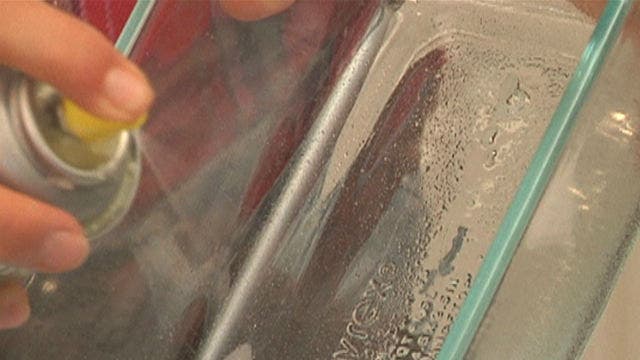Could your cooking spray be unsafe?
Q&A with Dr. Manny: Are our favorite cooking sprays actually bad for our health?
When cooking sprays came on the food scene, I was thrilled. Since they claimed to add no additional calories and to make cooking surfaces non-stick, it seemed like a perfectly reasonable way to “have my cake and eat it, too.”
However, as a nutritionist I like to read my food labels so I turned the can over to read the ingredient deck. I was shocked to see the long list of ingredients and didn’t recognize many of them, including dimethylpolysiloxane, diacetyl and propellants. I decided to take these ingredients on a little trip down research lane so I could really begin to understand what I had just fed my family.
Dimemythlpolysiloxane: What a mouthful that word is! This is a chemical that’s a form of silicone that helps keep the oil from foaming. I discovered that it’s also used in cosmetics, refrigerants and Silly Putty. After reviewing animal studies, the World Health Organization stated that they found no adverse health effects associated with Dimethylpolysiloxane. However, personally, I’m uncomfortable feeding my family a chemical that has uses in cosmetics and Silly Putty.
Diacetyl: Studies have shown that exposure to diacetyl (the butter flavoring that is often added to cooking sprays) can increase your risk of lung disease. With long-term or repeated exposure, diacetyl can cause serious respiratory disease. While many cooking spray manufacturers no longer use this chemical, researchers are still concerned about the risk of lung disease.
GMOs: Cooking oils such as canola (rapeseed), corn and soy are commonly made with genetically modified organisms (GMOs), or ingredients that have been made through genetic engineering to be resistant to weather, pests and chemicals that would damage an all-natural plant. GMOs are in high use in the United States and many consumers have concerns about their safety.
Propellants: When oil is placed in an aerosol can, you need to add some sort of force to get it out of the can and into your pan. That’s where propellants enter the picture. While most of the commonly used propellants are on the U.S. Food and Drug Administration’s (FDA) “Generally Recognized As Safe” (GRAS) list and considered safe to consume, I’m still uncomfortable adding chemicals like as isobutane or propane to my family’s diet. Butane, isobutane and propane are colorless and odorless compressed gases that are derived from petroleum and natural gas.
Even though many experts and the FDA deem cooking sprays to be safe, as a certified nutritionist and mom I prefer to keep the chemical consumption in my home at a minimum. Instead of purchasing a can of aerosol cooking spray, I made my own. At the local cooking store, I bought an oil mister spray bottle. Then, I added my own oil (avocado is best for high heat) and the mister worked beautifully, adding a light spray of oil to my pan. True, it may have added a few extra calories, but I avoided using any chemicals.
Deborah Enos is a certified nutritionist, author, corporate health speaker and board member of the American Heart Association. For more information visit deborahenos.com.

